Choosing the perfect flooring for your home or office can be a daunting task.
This is more challenging when you're faced with a plethora of options like slate and porcelain tiles. But fear not! We've got you covered.
In this article, we'll take a deep dive into the world of slate and porcelain tiles, exploring their unique benefits and drawbacks.
With so much to consider, from style and budget to durability and maintenance, it's important to have all the facts before making a decision.
That's why we've put together this comprehensive guide to help you navigate the world of slate and porcelain tiles.
By the end of this article, you'll have all the answers you need to create a beautiful, functional, and timeless space reflecting your style and needs.
So, are you ready to discover what sets slate and porcelain tiles apart? Do you want to know which one is the best fit for your unique needs and preferences?
Then keep reading! We'll be unpacking everything you need to know about these fantastic flooring options—let's get started!

Slate Vs Porcelain Tile Differences
First, let's dive into the aesthetics of slate and porcelain tiles.
Slate, a natural stone, features unique textures and colors, bringing an earthy feel to any space.
On the other hand, porcelain tiles are man-made, offering a wide range of designs, patterns, and colors that can easily mimic other materials. Examples are wood, marble, or even slate itself.
Now, let's discuss durability. Slate is known for its strength, as it has a layered and hard-packed composition that resists cracks and breaks
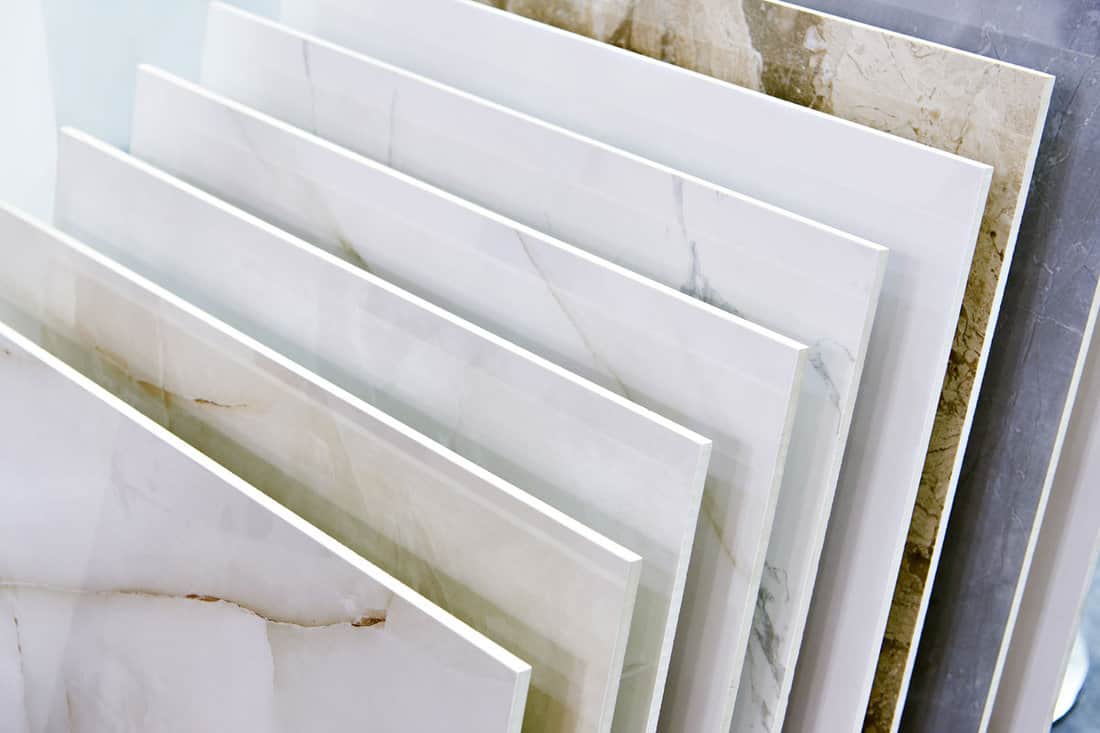
We may include affiliate links and curated AI content to highlight top design styles.
In comparison, porcelain tiles are considered even more durable, thanks to their denser and less porous structure.
This makes porcelain ideal for high-traffic areas and for use in both indoor and outdoor settings.
When it comes to installation, slate tiles can be challenging for inexperienced DIYers due to their weight and uneven surface.
It's often recommended to hire professionals for a perfect finish.
Porcelain tiles are also on the trickier side to install, but they are smoother and easier to handle for those with some experience.
In summary, the aesthetic options, durability, and installation process differ between slate and porcelain tiles.
Depending on your preferences and needs, one might be a better fit for your space than the other.
Slate Vs Porcelain Tile Pros and Cons
Slate is a natural stone material with a unique, rugged beauty that adds an earthy touch to your home's interior.
One of its major advantages is its durability; slate is known to last a long time.
This makes it an excellent choice for high-traffic areas like kitchens, bathrooms, and entryways.
Additionally, slate flooring can increase your home's resale value due to its high-end appeal.
However, it's essential to consider that slate can be costly and requires regular maintenance to retain its appearance and prevent damage.
Porcelain tiles, on the other hand, are a type of man-made ceramic and have gained popularity for their robustness and low-maintenance qualities.
They are denser and more chipping-resistant than their ceramic counterparts, making them more appropriate for heavy-duty applications.
Porcelain tiles can last anywhere from 75 to 100 years with proper care.
However, one of their cons is their susceptibility to cracking under heavyweight impacts due to their brittle nature.
Let's take a look at some of the pros and cons of both slate and porcelain tiles in a brief comparison:
| Pros | Slate | Porcelain |
|---|---|---|
| Durability | ✔️ | ✔️ |
| Resale Value | ✔️ | ❌ |
| Low Maintenance | ❌ | ✔️ |
| Water Resistance1 | ❌ | ✔️ |
| Cost | 💲💲 | 💲 |
The choice between slate and porcelain tiles will ultimately depend on your personal preferences, budget, and the specific requirements of your space.
It's crucial to weigh the pros and cons of each option to make an informed decision.
Continue reading to uncover more in-depth information about these flooring solutions.
Specific Considerations
When comparing slate and porcelain tiles, there are specific considerations that homeowners must keep in mind.
These factors, such as slipperiness when wet, water damage, and suitability for hot weather, can greatly influence the decision between the two.
In this section, we will delve into these key aspects, helping you determine the best choice for your home. Let's explore each of these concerns in detail.
Which Is Slippery When Wet?
Safety underfoot is an important factor when deciding on flooring material.
Both slate and porcelain tiles have their benefits and drawbacks in this regard.
Slate tiles are known for their natural textured surface, which can provide some grip when wet. However, the level of slip resistance will depend on the specific type of slate and its finish.
On the other hand, porcelain tiles are available in various finishes, ranging from glossy to textured. Textured and matte finishes can reduce slip risk, while glossy finishes can be more slippery when wet.
If you are particularly concerned about slipperiness, choose a textured or matte finish for either slate or porcelain tiles to enhance safety.
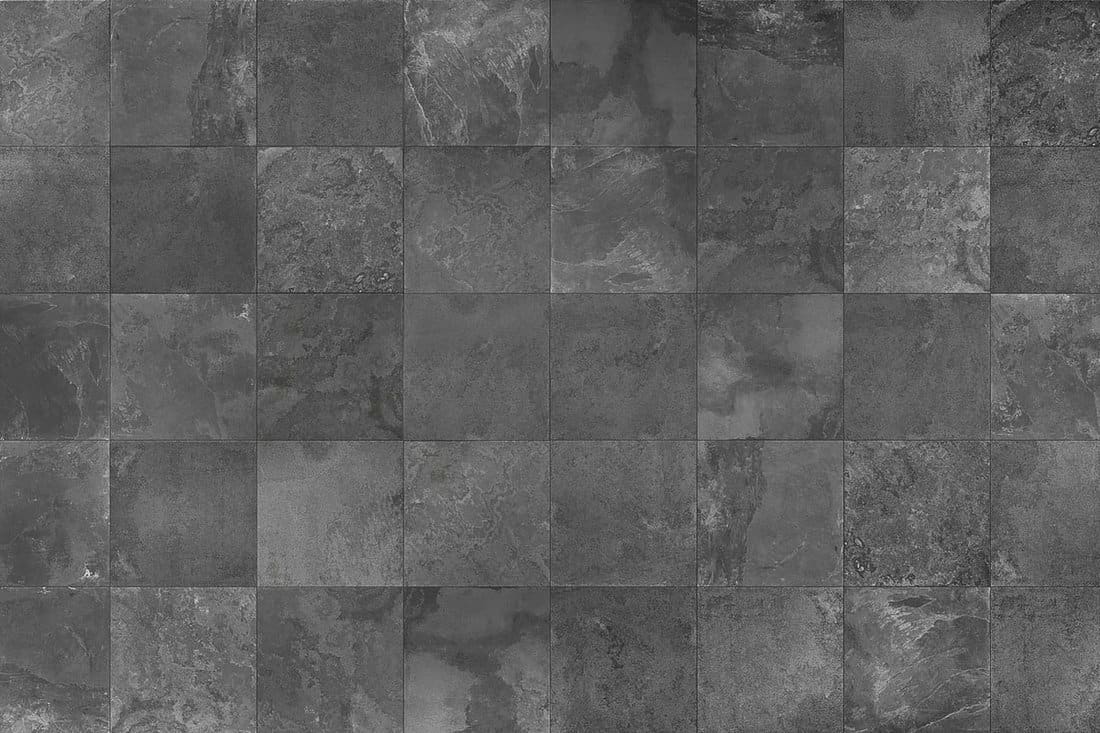
Which Tile Is More Prone to Water Damage?
Dealing with water damage can be a significant headache for homeowners. Therefore, it's essential to consider the water resistance of your flooring material.
In this arena, porcelain tiles showcase a clear advantage.
Porcelain is denser and less porous than slate, making it highly resistant to water absorption and stains.
Slate tiles, being natural stones, are more susceptible to water damage due to their porous nature.
They may require sealing to protect against moisture, stains, and potential damage.
As such, porcelain tiles are generally the more water-resistant option of the two.
Which Is Better for Hot Weather?
In hot climates, flooring materials can influence indoor comfort. For hot weather conditions, both slate and porcelain tiles can provide benefits.
Slate tiles are natural stones, so they can help keep your home cool during hot weather, as they effectively absorb and dissipate heat.
Moreover, slate works well with radiant heat systems, providing an additional layer of comfort during cooler months.
Similarly, porcelain tiles also maintain a cool surface in hot weather, making them suitable for warm climates.
The choice between slate and porcelain ultimately comes down to factors like appearance, installation costs, and maintenance preferences.
Both will perform well in hot weather.
Maintaining Tiles
When it comes to selecting the right flooring for your home, understanding the maintenance requirements of each tile option is crucial.
In this section, we will explore the care methods for both porcelain and slate tiles, comparing their upkeep processes and costs.
Maintaining Porcelain Tile
Porcelain tile is known for being low-maintenance and easy to clean.
Its minimal moisture absorption means that spills and stains can be wiped up effortlessly with a damp cloth.
To keep porcelain looking its best, a regular cleaning routine using water or a mild detergent is all that's required.
Additionally, porcelain is less likely to show chips and cracks, making it a durable option for high-traffic areas.
Maintaining Slate Tile
Slate flooring offers a unique and attractive visual appeal, but it does need slightly more care than porcelain tiles.
Slate tiles require sealing to protect against stains and damage, and this process must be repeated more often than with other natural stones.
However, with regular attention and proper maintenance, slate tiles can continue to provide a stunning appearance for your home.
Maintenance Costs
When considering the cost of maintaining your chosen tile, it's essential to account for several factors.
This includes cleaning and sealing products, professional services, and replacement expenses for damaged tiles.
Porcelain tiles tend to have a lower overall maintenance cost due to their resilience and fewer sealing requirements.
On the other hand, slate tiles may incur higher costs due to the need for more frequent sealing and possible professional maintenance.
Carefully weigh these factors for both types of tiles to determine which option aligns with your maintenance expectations and budget.
Remember, every homeowner's needs are different, so be sure to prioritize what matters most to you in finding the perfect fit for your home.

Durability Comparison
Have you ever found yourself wondering which one is more durable between slate and porcelain tiles? Don't worry—you've come to the right place.
In this section, we'll delve into the durability of both slate and porcelain tiles to help you make an informed decision for your flooring needs.
Which Is More Durable?
Slate tiles, being a natural stone material, are known for their inherent strength and resistance to cracks, scratches, breaks, and chips.
This makes them a durable option for flooring projects.
On the other hand, porcelain tiles are also renowned for their durability due to their low porousness and higher density.
Porcelain tiles must have a Porcelain Enamel Institute (PEI) rating of 5 to meet the Porcelain Tile Certification Agency's (PTCA) standards.
This ensures they can withstand wear and tear in both residential and commercial settings.
When comparing the durability of slate and porcelain tiles, it's essential to weigh in factors such as the specific areas where they will be installed.
This also includes the level of foot traffic and other specific conditions they will be exposed to.
Both options have their strengths, and choosing the right one will depend on your unique circumstances.
Before you go, check out some of our previously written posts below:

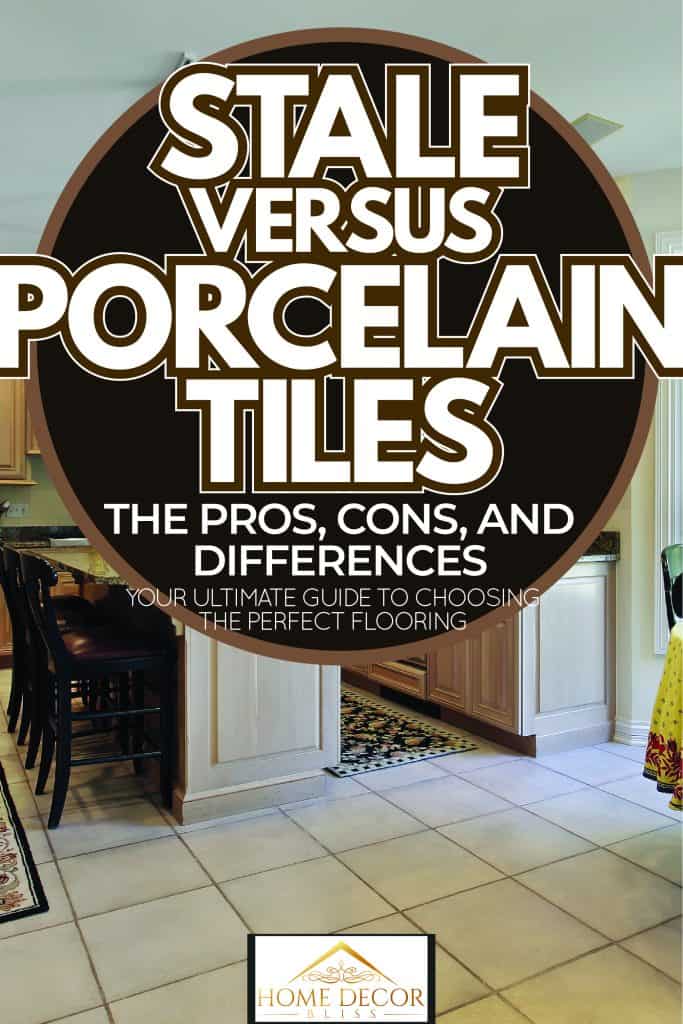
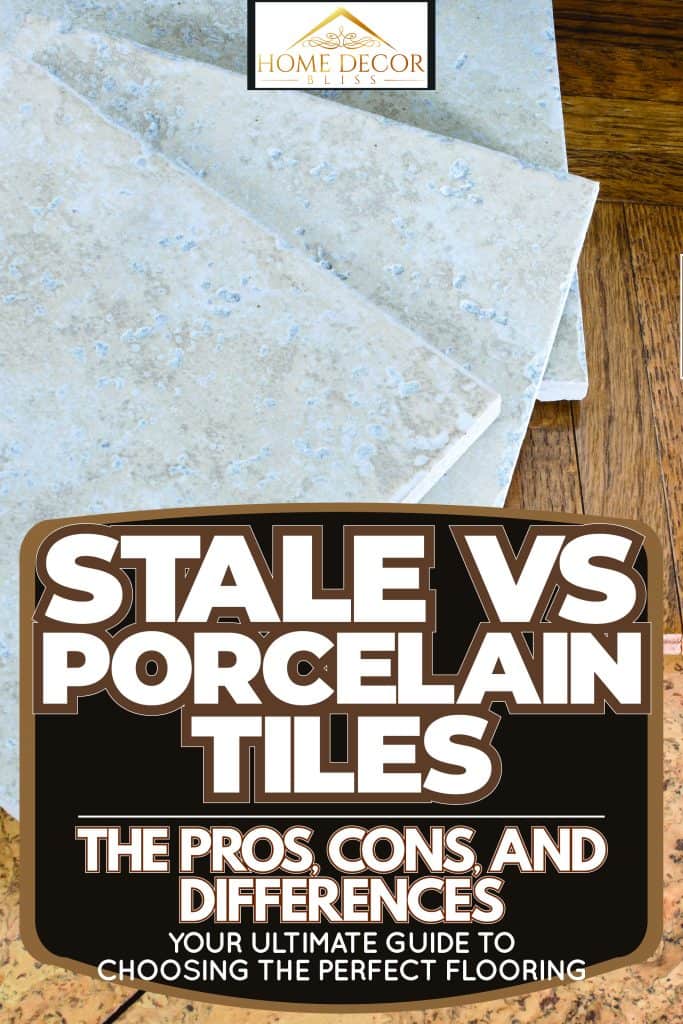
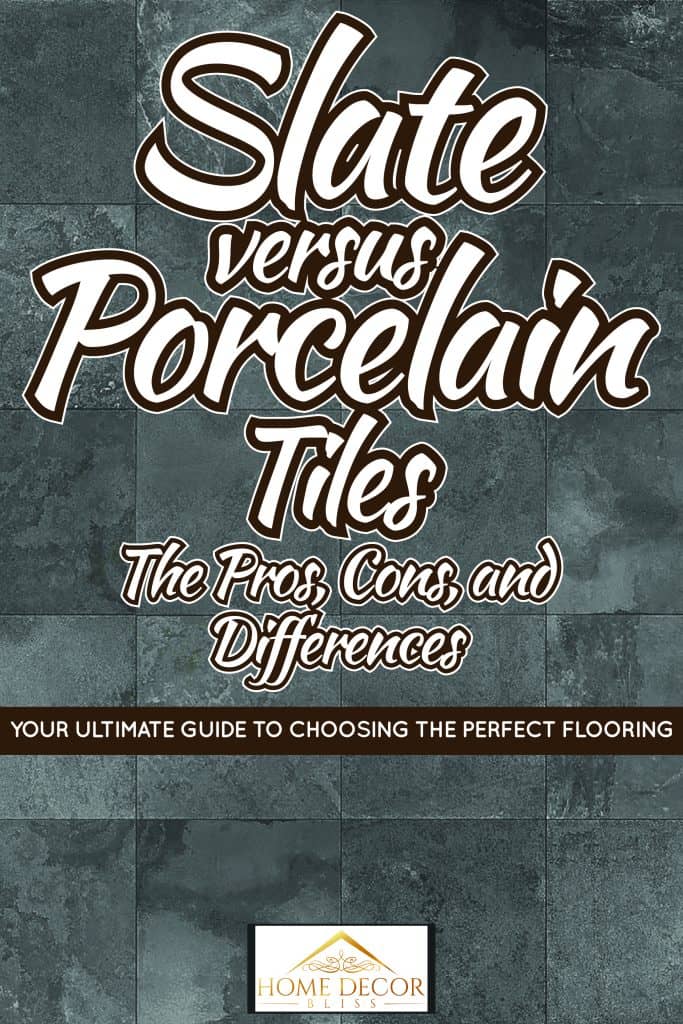
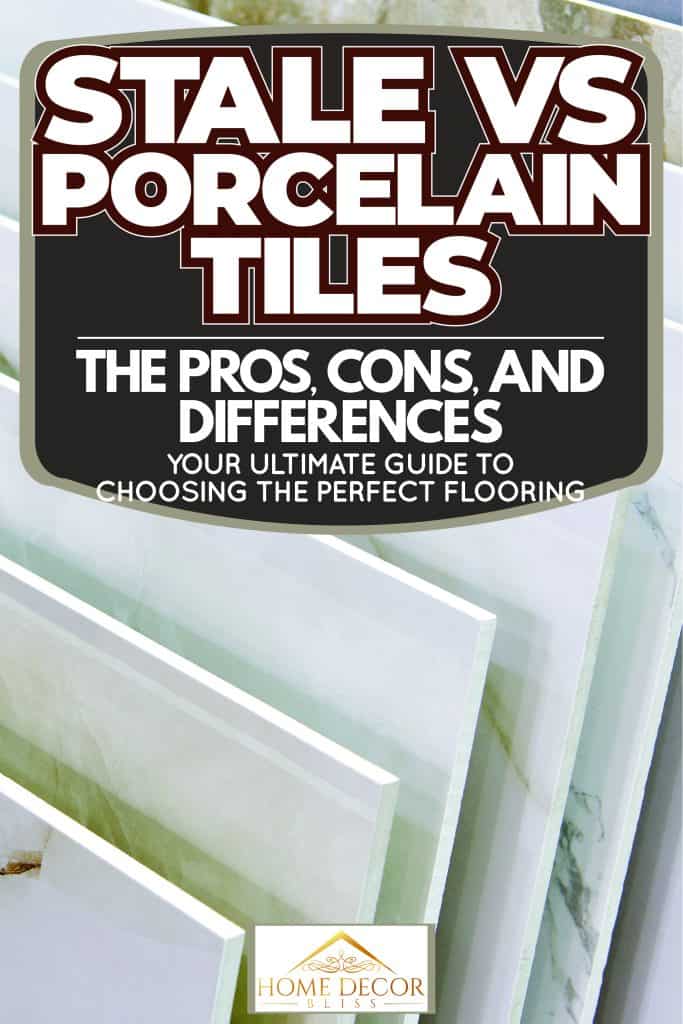

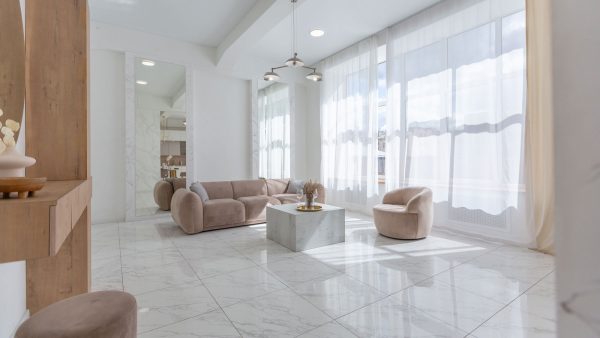
![Tile setter applying thinset to a single tile, Will Thinset Stick To Formica [Answered] - 1600x900](https://homedecorbliss.com/wp-content/uploads/2023/08/shutterstock_1734268679-600x338.jpg)
![The working tiler removes the glued tile from the wall, the technology of professional and highly skilled tile work - How to Remove Mortar From Old Tiles For Reuse [the Ultimate Guide]](https://homedecorbliss.com/wp-content/uploads/2023/08/The-working-tiler-removes-the-glued-tile-from-the-wall-the-technology-of-professional-and-highly-skilled-tile-work-600x400.jpg)